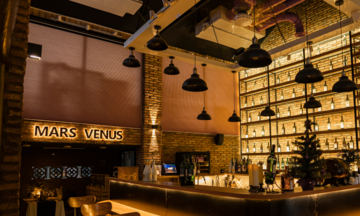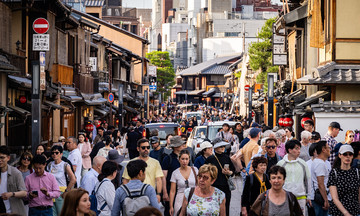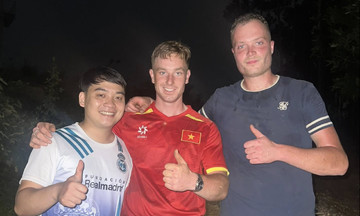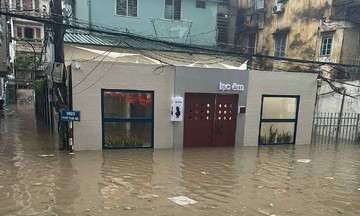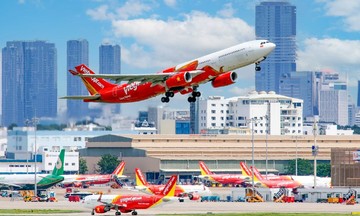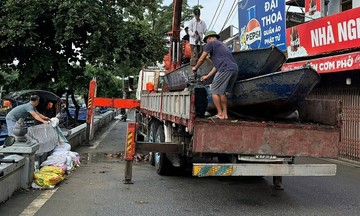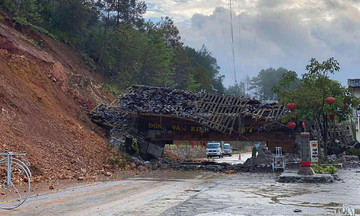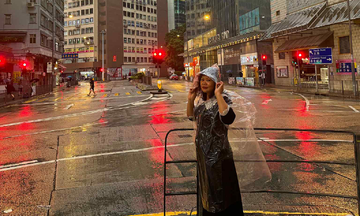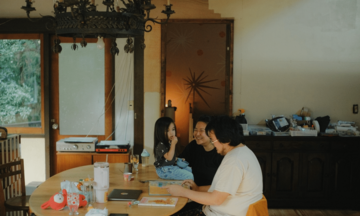Amidst the excitement of Vietnam's 80th National Day celebrations in late August, Alain Tan Huynh returned to visit his son and stopped by Pho 2000, along with two hotels on Le Thanh Ton Street (former District 1). Sitting in the lobby of the Avanti Hotel, watching the steady flow of international guests, Huynh was transported back 36 years to a time when Vietnam's tourism industry was in its infancy.
In April 1989, three years into Vietnam's Doi Moi reforms, Huynh Trung Tan, known as Alain Tan Huynh, returned to his homeland for the first time in nearly two decades. The trip, initially intended as a brief visit to Hanoi, became a turning point in his life.
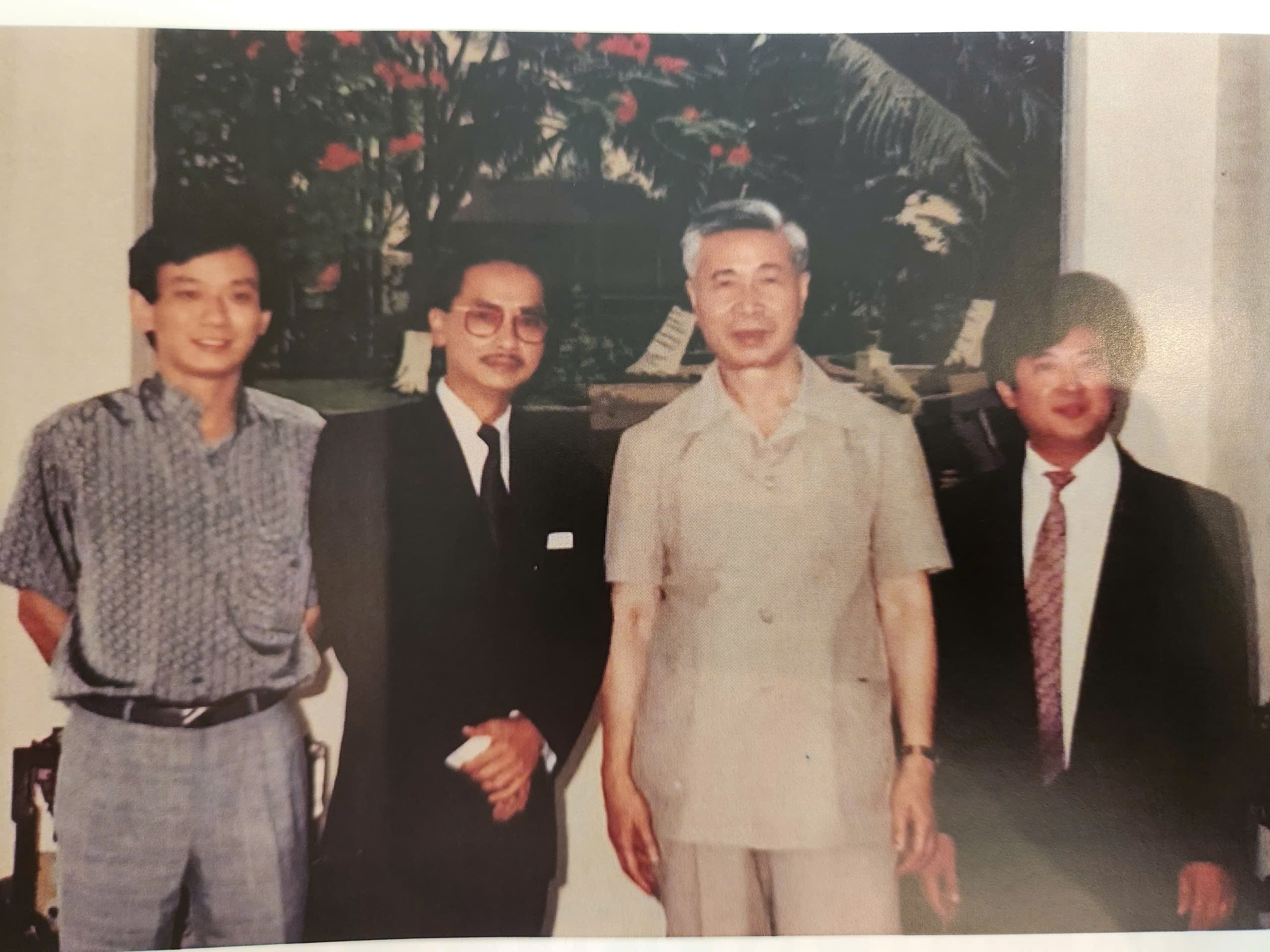 |
Huynh at his family's hotel on Le Thanh Ton Street (former District 1) in August. Photo: Bich Phuong |
In 1989, Vietnam faced ongoing hardships. The US embargo remained, travel procedures were strict, resources were scarce, and foreign investment laws were still underdeveloped. US passport holders like Huynh couldn't receive direct entry stamps; they had to obtain a separate visa in Thailand. “Thailand greatly benefited from the influx of Vietnamese-Americans returning to Vietnam at that time," Huynh recalled. Most groups had a two-night layover in Bangkok, spending money on food and accommodation while Vietnam was still navigating its first steps in tourism and hospitality.
Overseas Vietnamese had to join supervised tour groups, requiring permission for every destination. Moving between provinces required official letters of introduction for hotel bookings and travel arrangements.
Upon arriving in Hanoi, Huynh's first priority was finding a bowl of pho. However, chicken pho was the norm. Beef pho was a rarity because cattle were primarily used for agricultural work. Coffee was even scarcer, available mainly in hotels, while street vendors sold iced tea and peanuts.
Beyond the culinary landscape, it was the people who left a lasting impression. At the Hoa Binh Hotel, when Huynh ordered multiple dishes, the staff advised him to order less initially and add more later to avoid waste. When he left a tip, they returned it, assuming he had forgotten it. “I was surprised then," he recounted, "but I realized it reflected the integrity of the service staff, prioritizing customer needs over profit—a beautiful aspect of Vietnamese culture.”
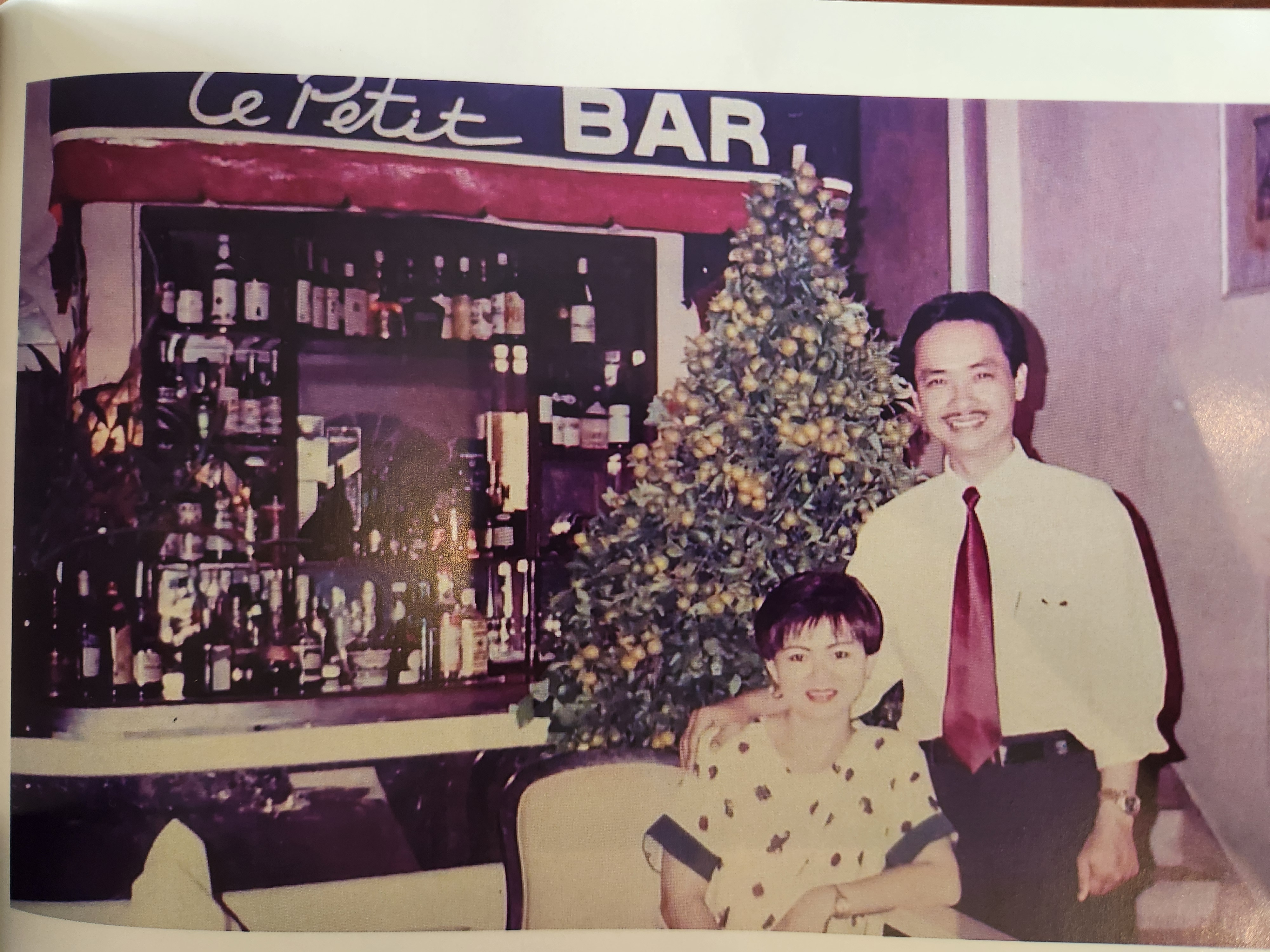 |
Huynh at the Viet Xo Friendship Labour Cultural Palace, Hanoi, in 1989. Photo: provided by interviewee. |
A career turning point came on his second day in Hanoi. The tour guide led him to the Ministry of Foreign Affairs to meet Minister Nguyen Co Thach and Deputy Minister Vu Khoan. Over tea and local treats, the leaders spoke frankly. “You have achieved success in America, but Vietnam is still your homeland. Our country is poor and needs your contributions," Minister Thach said, words Huynh still remembers. The minister pointed to Huynh, noting his expertise in the restaurant industry, his experience in staff training and running a chain of restaurants in the US. He suggested Huynh could collaborate in training personnel, preparing for the influx of foreign visitors as Vietnam opened its doors. At the time, domestic tourism primarily catered to socialist bloc visitors under strict protocols and lacked experience with foreign currency-generating tourists. The 1991 National Tourism Year was approaching, and Vietnam needed to be ready.
Traveling from Hanoi to Da Nang and back to Ho Chi Minh City, Huynh was invited by the Southern Regional Tourism Department to consult and participate in the first joint venture restaurant project in the city. International dining in Ho Chi Minh City was almost non-existent, with only one European restaurant on Tran Hung Dao Street near today's Bui Vien area, frequented by almost all foreign tour groups.
Although initially not intending to invest, the invitation and his love for his homeland stirred Huynh's thoughts. Following the Tourism Department's suggestion, he took over an old house on Ky Con Street, District 1, to renovate and open a restaurant. The infrastructure was lacking. The house was dilapidated, with power outages 4-5 days a week. “Hearing the Tourism Department's assurance of customer flow and priority for tour groups, I saw an opportunity," Huynh said, adding that the biggest challenge was the embargo, making formal investment nearly impossible.
After three months in the US, longing for his homeland and the desire to contribute pushed him to return to Vietnam. After numerous discussions with his wife, in December 1989, they decided to return, bringing their experience and restaurant and hotel training procedures from the US. Arranging family matters, Huynh and a partner representing the Vietnam National Administration of Tourism signed a joint venture under his cousin's name, with Huynh as a witness. One party provided the property, business mechanisms, and access to foreign tourists, while the other invested and trained staff to create an authentic French restaurant. That same month, Le Mekong opened, pioneering fine dining in Ho Chi Minh City.
The renovated townhouse had a bar on the ground floor, a dining room on the first floor, a kitchen at the back, and a banquet room on the top floor. On the rooftop, in a small 13 m2 room, Huynh and his wife made their home.
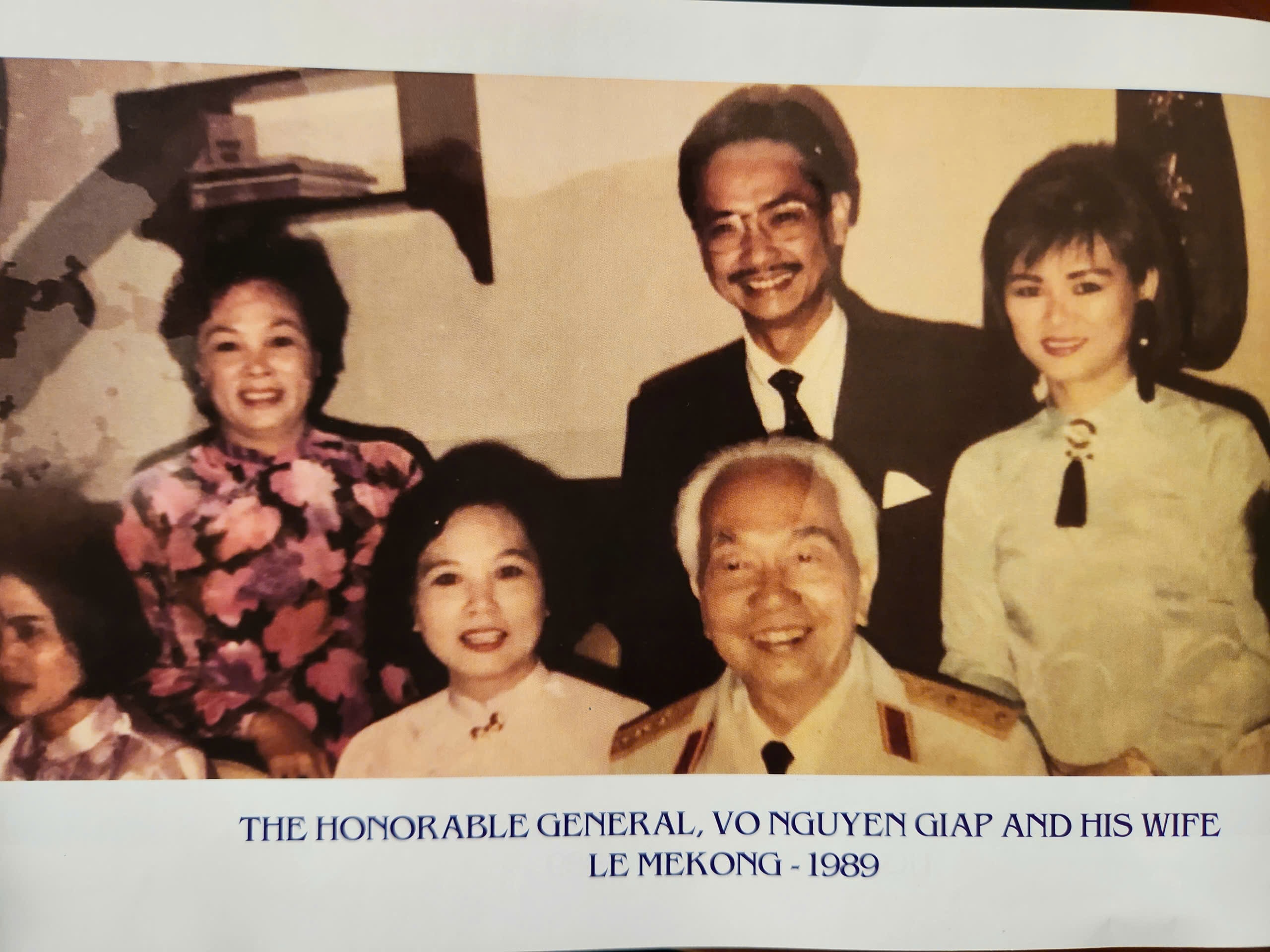 |
Huynh and his son at their family's hotel on Le Thanh Ton Street (former District 1) in August. Photo: Bich Phuong |
Huynh (wearing glasses) in a meeting with the late Foreign Minister Nguyen Co Thach in April 1989. Photo: provided by interviewee
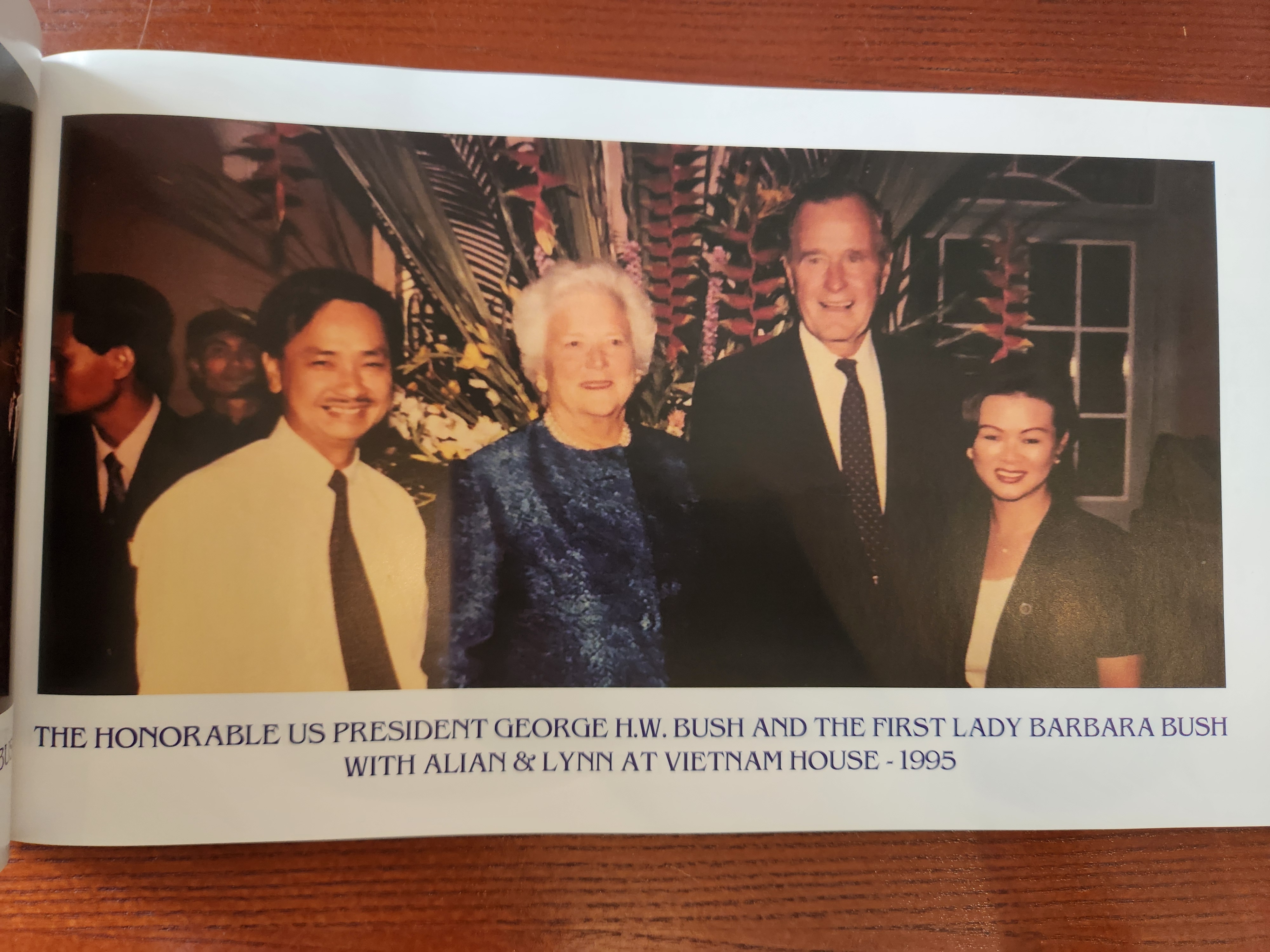 |
Huynh and his wife at Le Mekong in 1989. Photo: provided by interviewee
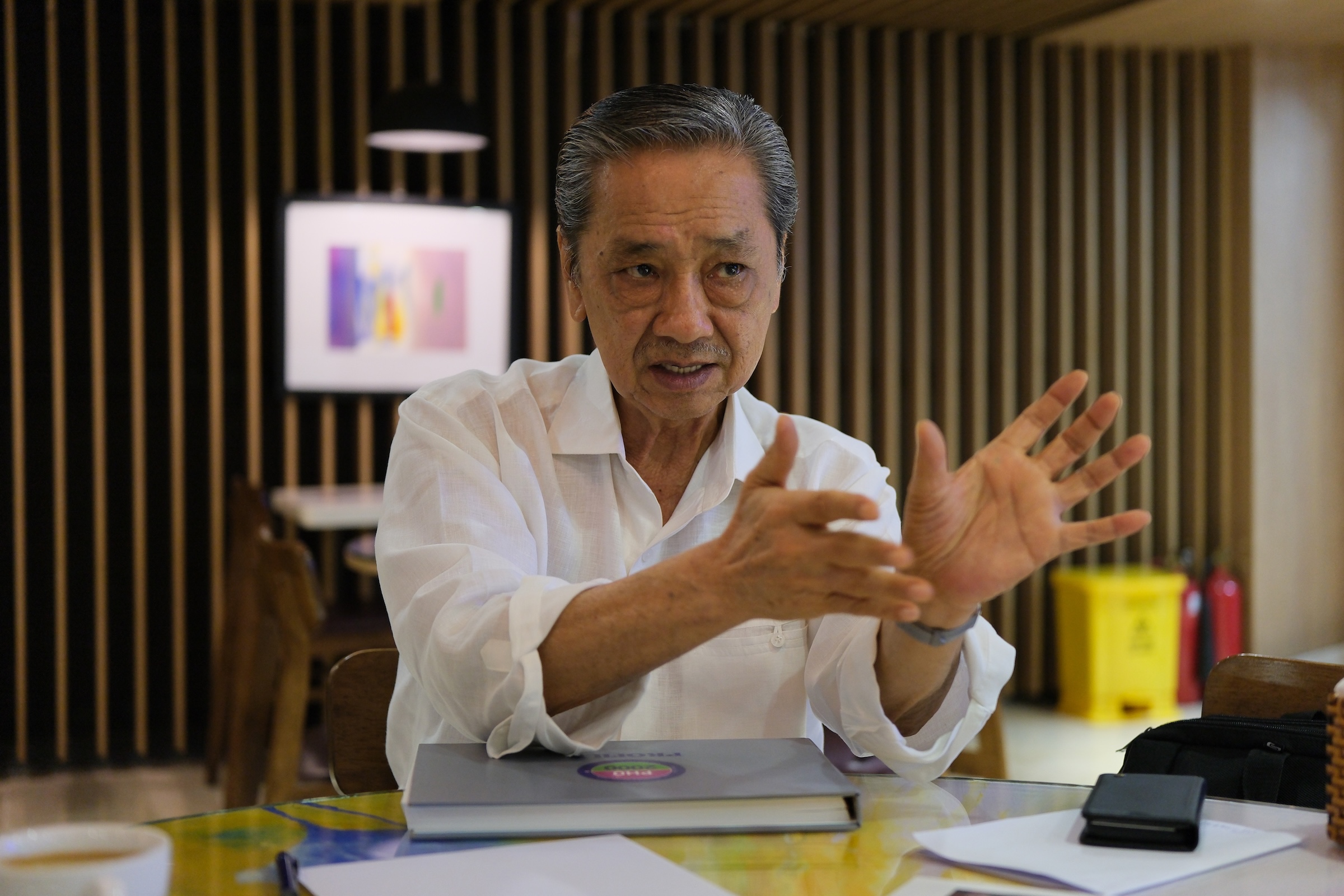 |
Huynh and his wife welcoming General Vo Nguyen Giap to Le Mekong in 1989. Photo: provided by interviewee
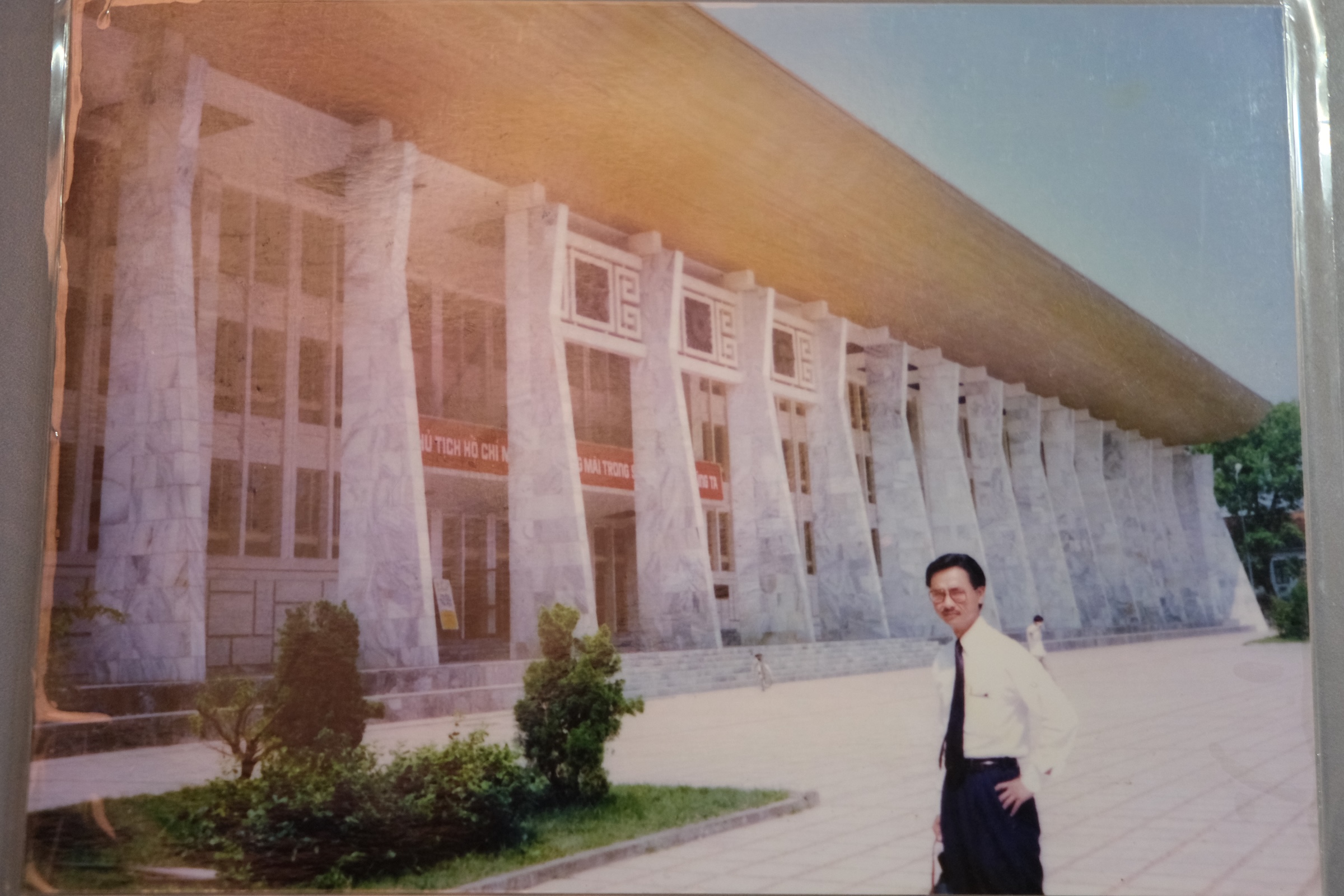 |
President George H.W. Bush at Vietnam House in 1995. Photo: provided by interviewee
The beginning was fraught with challenges. Cutlery and tableware had to be sourced from Thailand. Imported wines and European ingredients were difficult to find. Lacking modern kitchen equipment, Huynh and his wife improvised, creating a charcoal oven, manually fanning the flames.
After stabilizing the restaurant, they returned to Thailand for business to generate additional capital, as "restaurants take 1-2 years to become profitable". Difficulties persisted. A few months after opening, Le Mekong incurred consecutive losses, tens of thousands of USD, due to its clientele primarily consisting of Eastern European delegations under protocol, who lacked the means to pay.
In March 1990, they returned to Ho Chi Minh City to manage the restaurant directly, agreeing to close if it remained unprofitable after six months. Just two months later, the restaurant turned a profit, coinciding with an influx of international tourists, diplomats, and investors, transforming Le Mekong into the city's premier French fine-dining destination.
One notable guest was General Vo Nguyen Giap, following his trip to India in December 1989. This event further solidified Le Mekong's reputation as a top culinary address in Ho Chi Minh City as Vietnam opened its doors to the world.
Following Le Mekong's success, Saigontourist partnered with Huynh to open Vietnam House on Dong Khoi - Mac Thi Buoi Street, serving authentic Vietnamese cuisine in an elegant setting. This project was commissioned by the Tourism Department for the 1991 National Tourism Year.
Vietnam House was the first upscale Vietnamese restaurant in Ho Chi Minh City, with staff in ao dai uniforms and live music on weekends. The "buffet ganh" concept was born here: staff inside the restaurant wrapped spring rolls, made pancakes, and presented dishes in shoulder poles, allowing guests to watch and enjoy the culinary performance.
"The buffet ganh format later became popular in many Ho Chi Minh City restaurants and hotels," Huynh noted.
In 1995, after Vietnam normalized relations with the US, former US President George Bush visited Ho Chi Minh City and dined at Vietnam House.
After continued success with upscale restaurants, Huynh took a different path, opening a restaurant dedicated to pho, a dish typically considered casual fare. In 2000, Pho 2000 debuted in District 1. Its fame grew when US President Bill Clinton dined there during his first visit to Vietnam in November 2000. After 25 years, the pho restaurant maintains a steady flow of international customers.
Over three decades later, Vietnam's tourism and culinary scene has transformed rapidly. At 72, Huynh has retired in the US, entrusting his legacy to his son and daughter-in-law, who manage the restaurant and hotel system in the heart of Ho Chi Minh City.
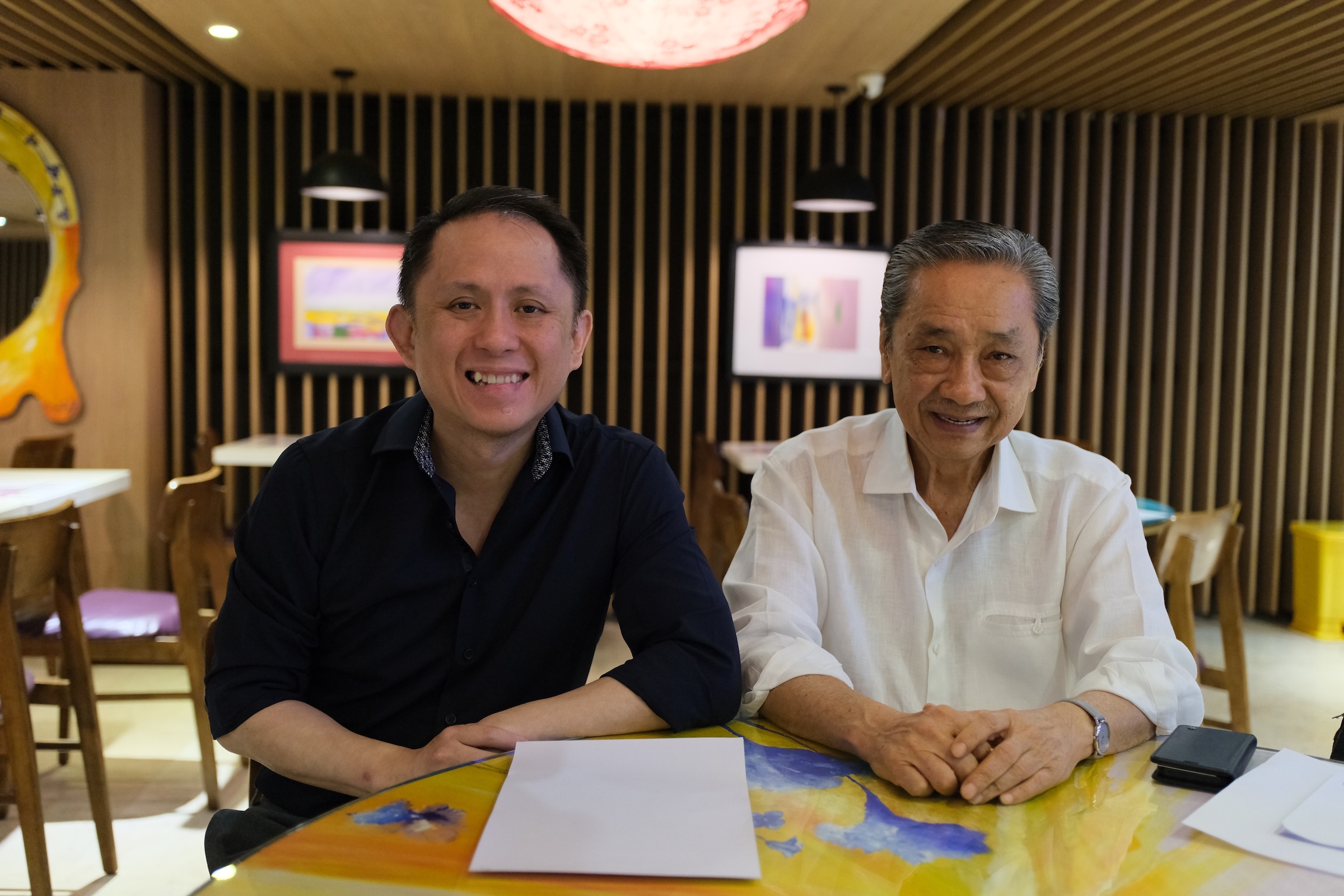 |
36 years after his first return, Alain Tan Huynh's pioneering efforts remain evident. From Le Mekong to Pho 2000, he helped put Ho Chi Minh City on the international culinary map, opening doors for Vietnam's restaurant industry during the era of tourism's rise.
Reflecting on his journey, Huynh believes the greatest lesson is the customer-centric philosophy. "From the early days of hardship, without electricity, gas, or equipment, to today, the one constant is the sincerity in service," he shared.
Bich Phuong



